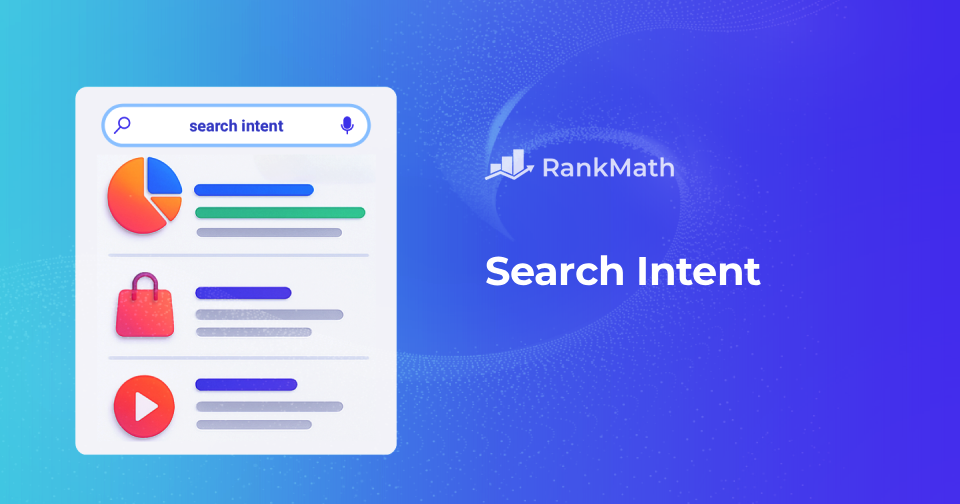When visitors search on Google, they aren’t just typing random words; they’re looking for something specific. It might be an answer, a product, a review, or a quick solution. The goal behind every search is called search intent.
In 2025, this matters more than ever. Search engines are getting better at understanding what users mean, not just what they type. That means if your content doesn’t satisfy the intent behind a search, it’s unlikely to rank well, no matter how many keywords or backlinks you have.
In this post, you’ll learn the different types of search intent, how to identify what your audience is looking for, and how to shape your content to meet their needs.
So, without any further ado, let’s get started.
Table Of Contents
1 Types of Search Intent
Every time you search for something online, you have a reason: maybe you want to learn, find, compare, or buy something. When you understand these reasons, you can create content that truly matches what audiences are looking for.
Let us discuss the different types of intent.
1.1 Informational Intent
This is when you want to learn something new. You’re not trying to buy or sign up; you just want clear information or instructions.
For instance, you might search for how to fix a leaky tap or what is SEO. When you create content for this type of intent, focus on explaining things clearly.
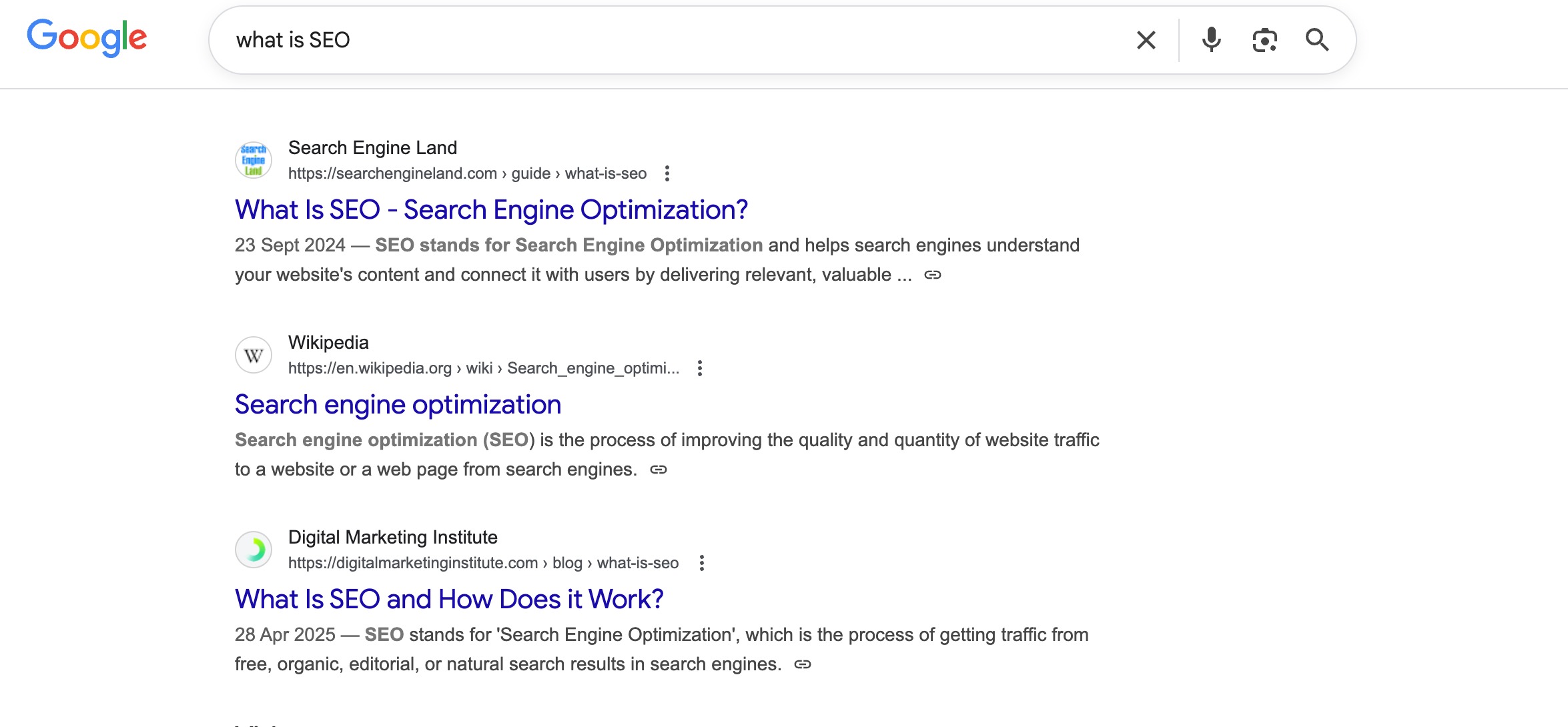
Use simple language, visuals, or examples to help your reader understand the topic quickly.
1.2 Navigational Intent
Here, you already know where you want to go, but you use Google to get there faster. Maybe you type Rank Math login or YouTube Studio to reach a specific website or page.
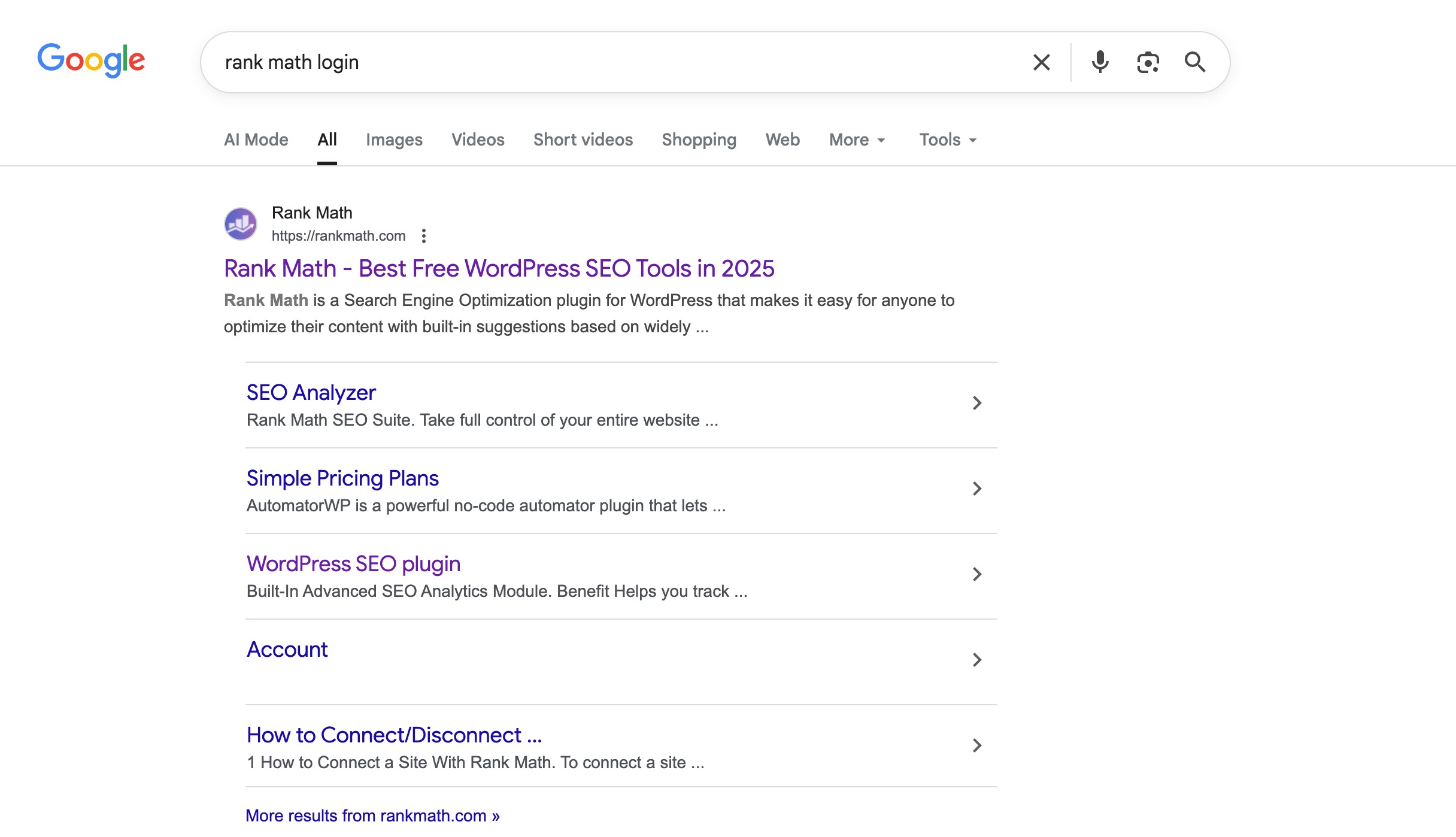
To meet this intent, make sure your brand pages, login portals, or official links show up easily when visitors search for your name.
1.3 Commercial Intent
Commercial intent means you’re researching before making a decision. You know you want to buy something, but you need to compare your options first.
Searches like best SEO plugins for WordPress or iPhone 15 vs Samsung S23 show commercial intent.
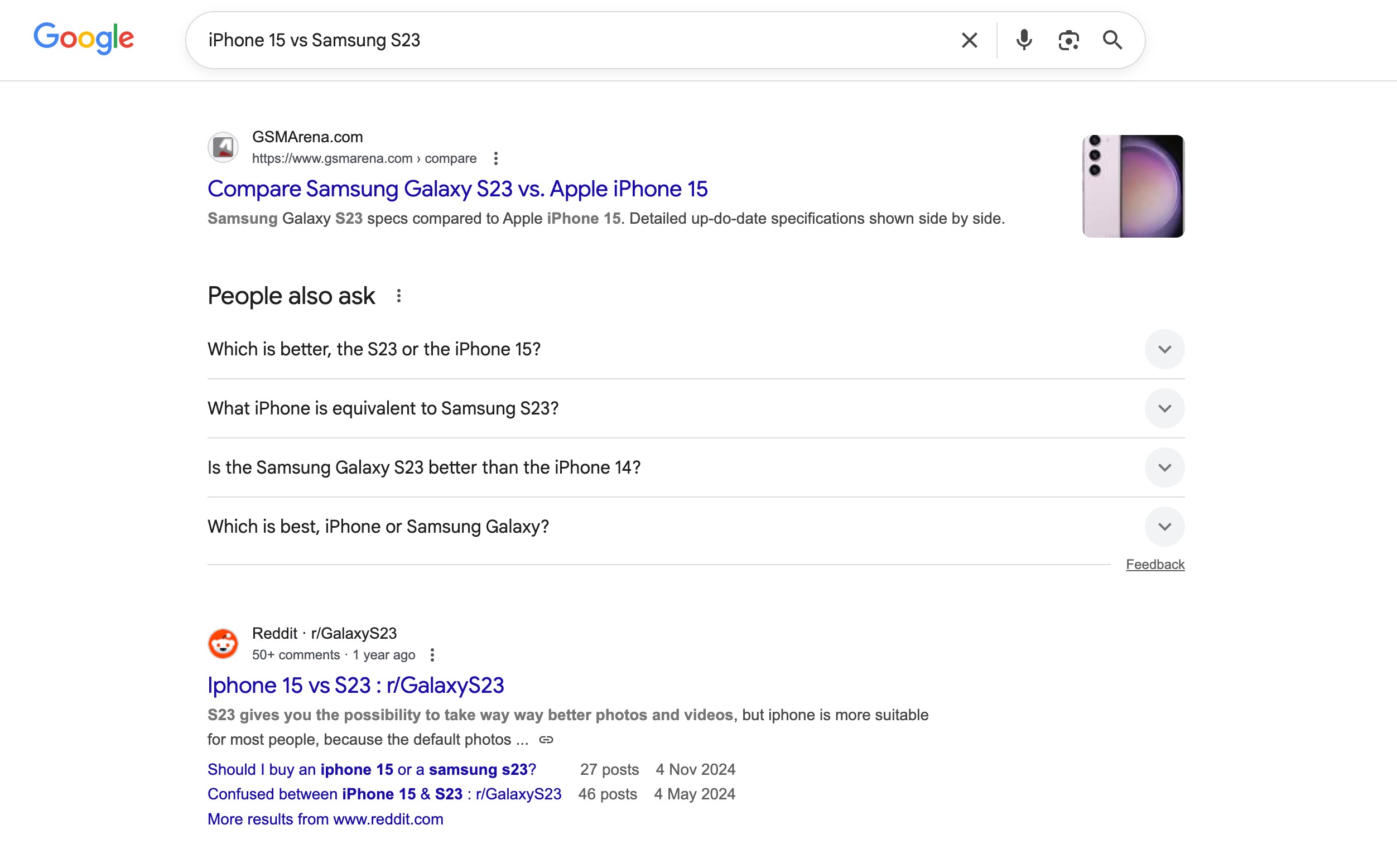
To match this, create comparison guides, product reviews, or “best of” lists that help visitors choose confidently.
1.4 Transactional Intent
Transactional intent is when you’re ready to take action, buy a product, sign up, or download something. Searches such as buy iPhone 15 128GB or get Rank Math PRO are clear signs of transactional intent.
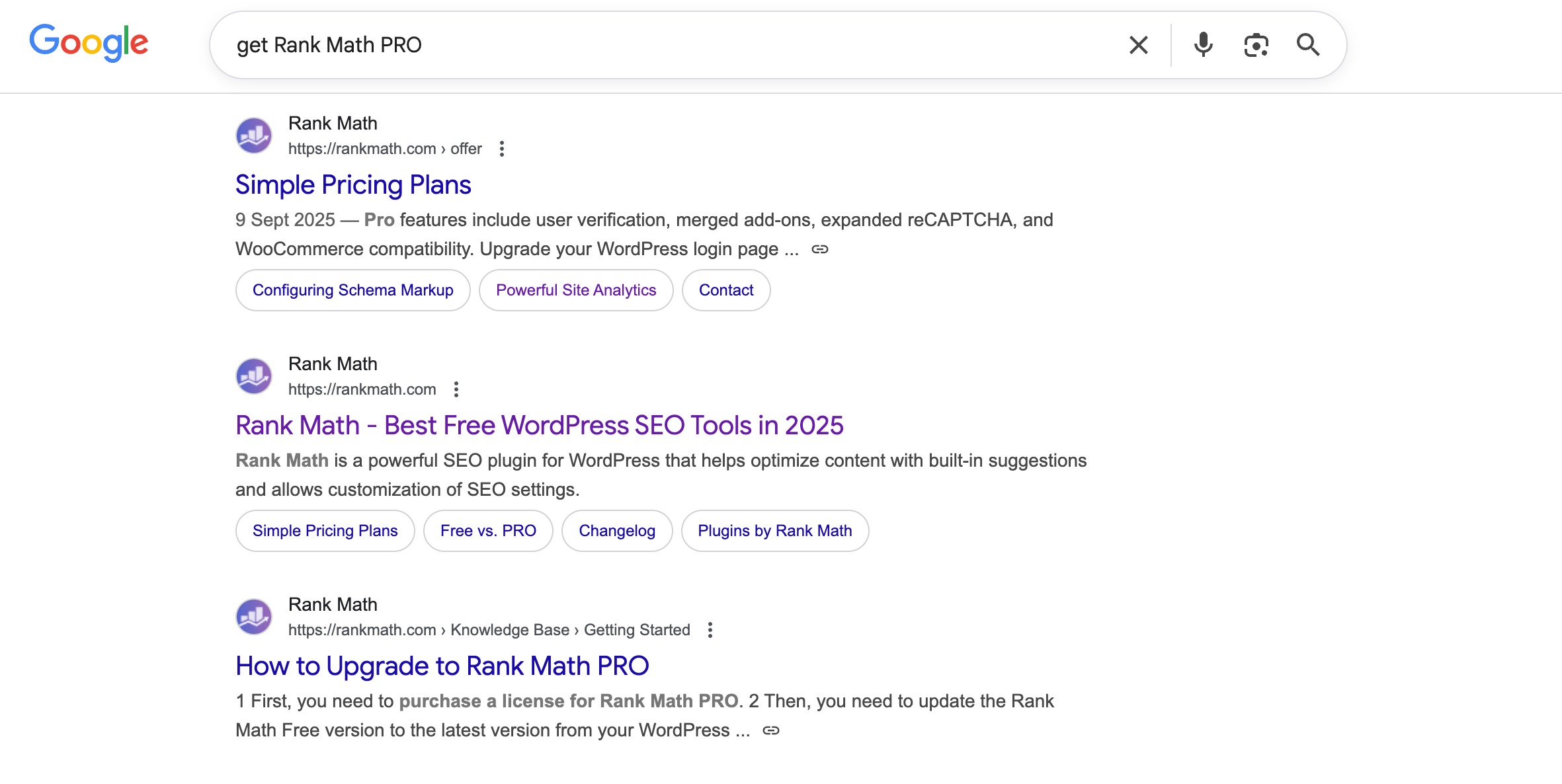
For this, your landing and product pages should be simple, trustworthy, and focused on helping users complete their goal quickly.
2 Why Search Intent is Important for SEO?
If you want your content to rank well, understanding why audiences search is just as important as knowing what they search for.
When you know the intent behind a keyword, you can create content that actually gives users what they’re looking for. You’re not just guessing anymore; you’re meeting their needs directly. This makes your content more useful, which is exactly what search engines like Google want.
Imagine someone searches for how to bake a cake. If you show them a product page selling cake pans, they’ll leave right away because it’s not what they expected. But if you offer a step-by-step recipe, they’ll stay, read, and maybe even bookmark your page.
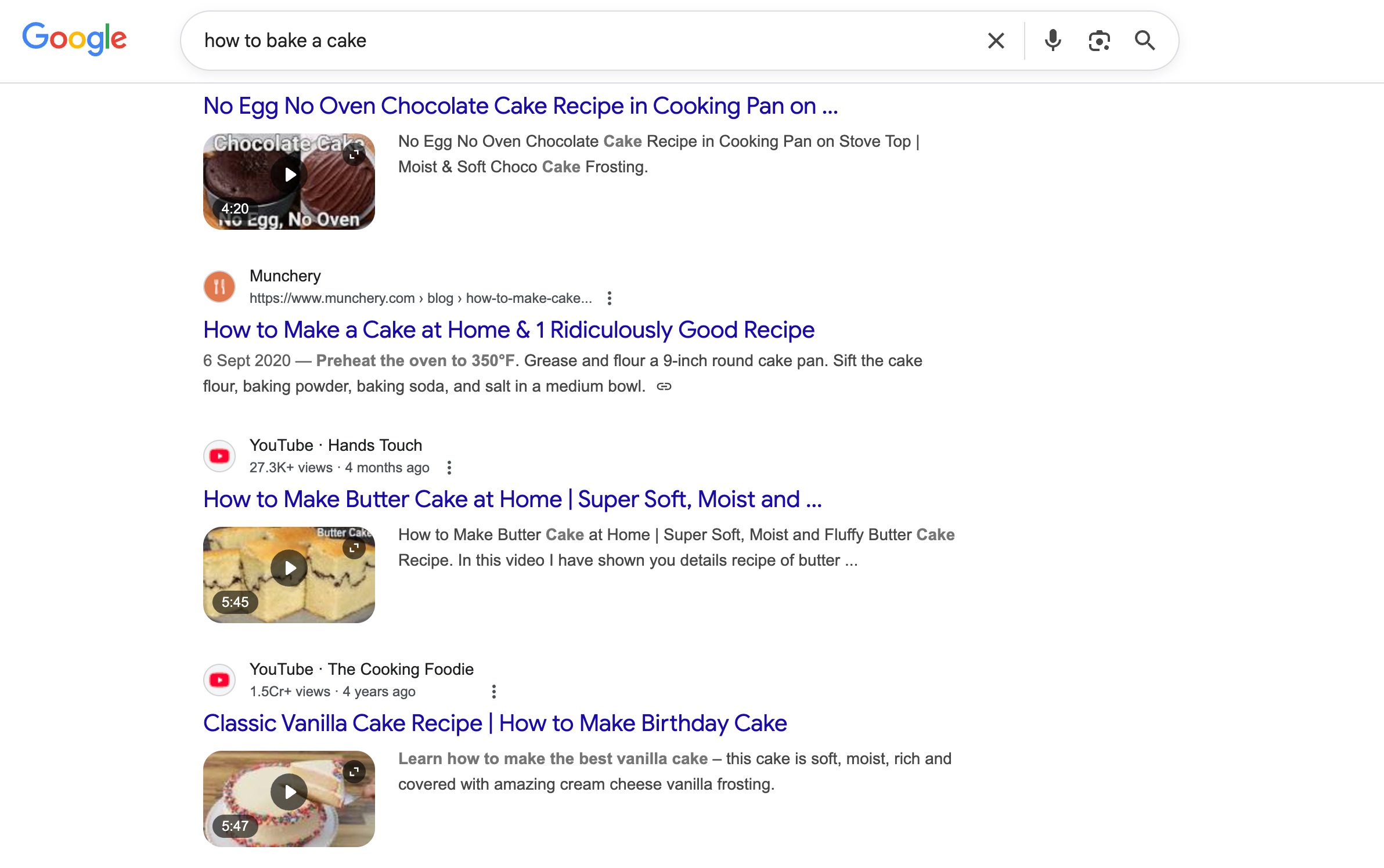
Search engines track how visitors interact with your page. If visitors stay longer, click around, or don’t bounce back to the results, it’s a sign that your page answered their question. Over time, it helps improve your rankings.
3 How to Identify Search Intent for a Keyword
When you’re doing keyword research, it’s not enough to know how many visitors search for a term; you need to know why they search for it. Understanding why helps you create content that matches their needs.
3.1 Analyze the SERP (Search Engine Results Page)
The easiest and most accurate way to understand intent is to look at what’s already ranking on Google.
Start by typing your keyword into Google and carefully examining the top 10 results. Ask yourself:
- What type of content shows up? (Is it a blog post, product page, video, or guide?)
- What format is it in? (Listicle, comparison, how-to tutorial, or landing page?)
- What’s the angle? (Beginner-friendly, in-depth, or focused on products?)
For example, if you search for the best SEO tools, you’ll mostly see listicles and comparison articles, which tells you the commercial intent is clear.
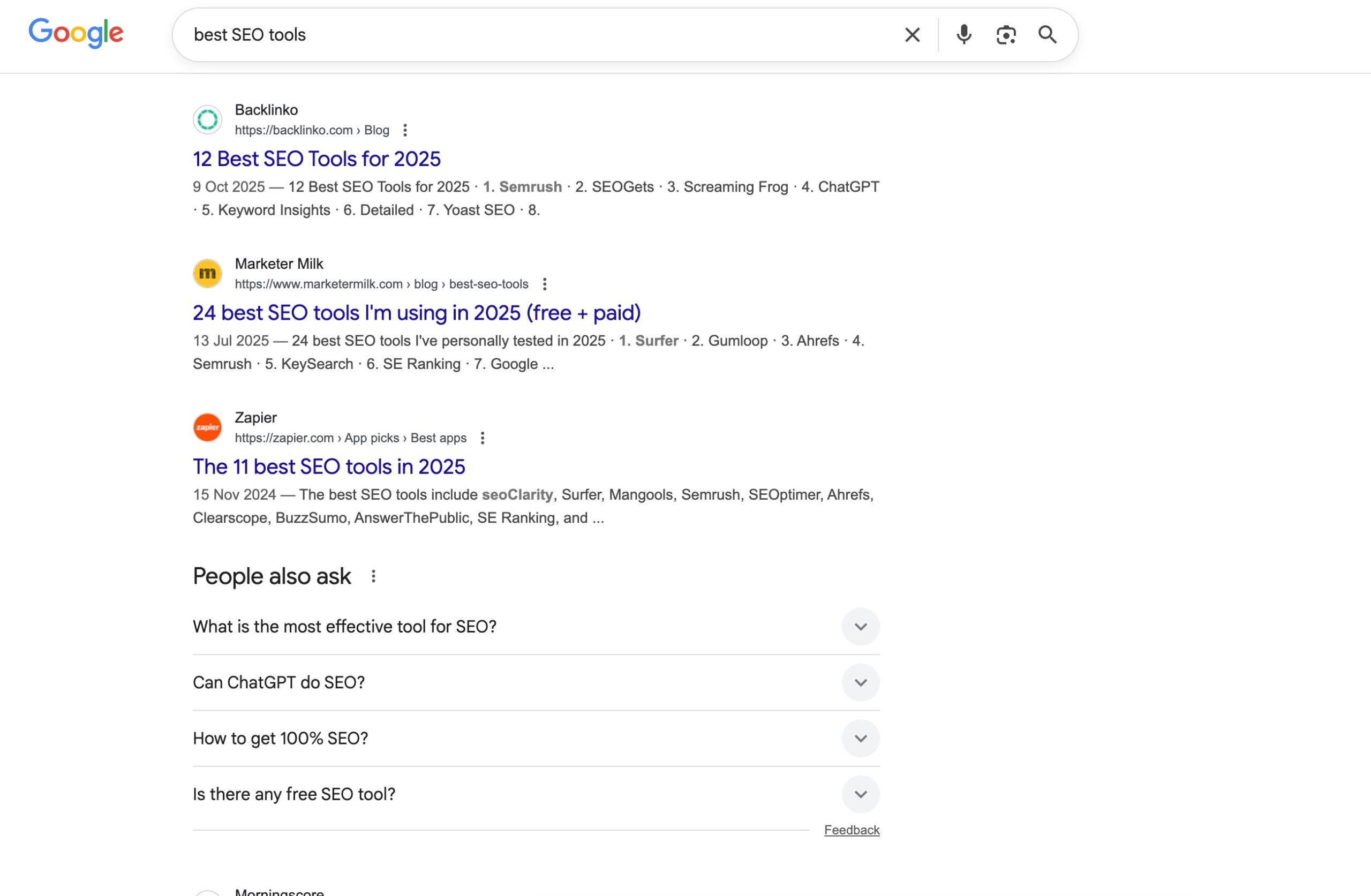
On the other hand, if you search how does SEO work, the top results are guides and explainer posts, which have an informational intent.
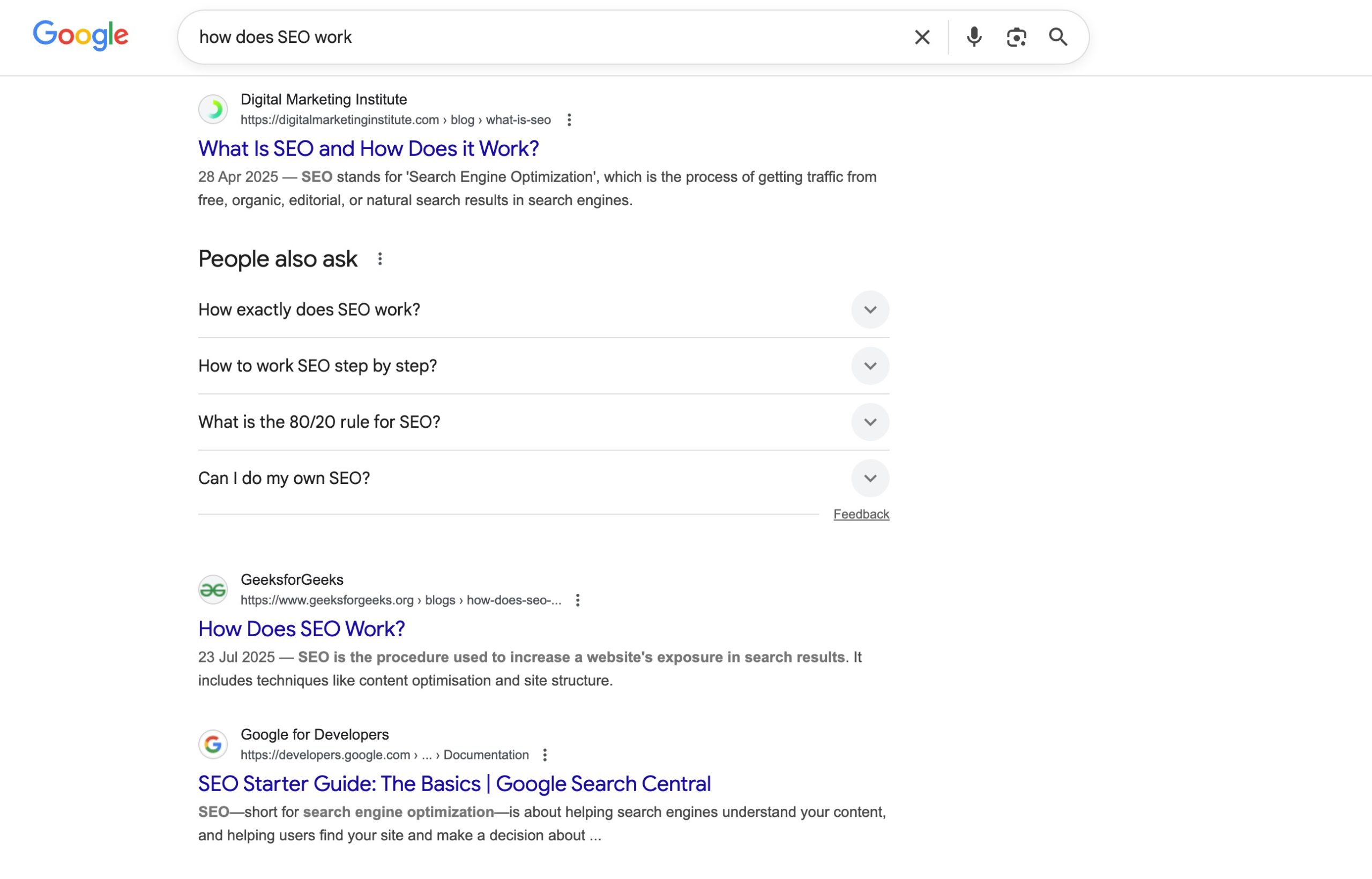
Also, don’t skip the SERP features like:
- Featured Snippet: usually shows informational intent (Google gives a direct answer).
- People Also Ask: shows related questions that reveal what visitors really want to learn.
- Videos or Image Blocks: can mean users prefer visual explanations or product previews.
These small clues help you shape your content in a way that matches how visitors expect information to be delivered.
3.2 Study the Query Language
The words in a keyword often tell you exactly what kind of intent it carries.
Here are some common patterns:
- Informational: how, what, why, tips, guide
- Example: how to write a blog post → user wants to learn.
- Commercial: best, top, compare, vs, review
- Example: best laptop for students → user is researching before buying.
- Transactional: buy, order, download, get, subscribe
- Example: buy MacBook Air M3 → user wants to make a purchase.
- Navigational: brand names or specific sites
- Example: Rank Math login → user wants to reach a particular page.
Long-tail keywords, those longer, more specific phrases, often give away intent more clearly.
For instance:
- cheap hotels in Goa with sea view: transactional intent (user wants to book).
- how to choose the right running shoes: informational intent (user wants guidance).
By paying attention to these words, you can immediately understand what your visitors are hoping to find.
3.3 Use Keyword Tools & Metrics
SEO tools can make identifying search intent much easier.
You can check the search intent in Rank Math from the individual post/page editor or in bulk. However, before doing so, you need to enable the search intent feature.
To enable it, navigate to Rank Math SEO → General Settings → Others in your WordPress dashboard. Scroll down to the Enable Search Intent section and toggle it on, as shown below.
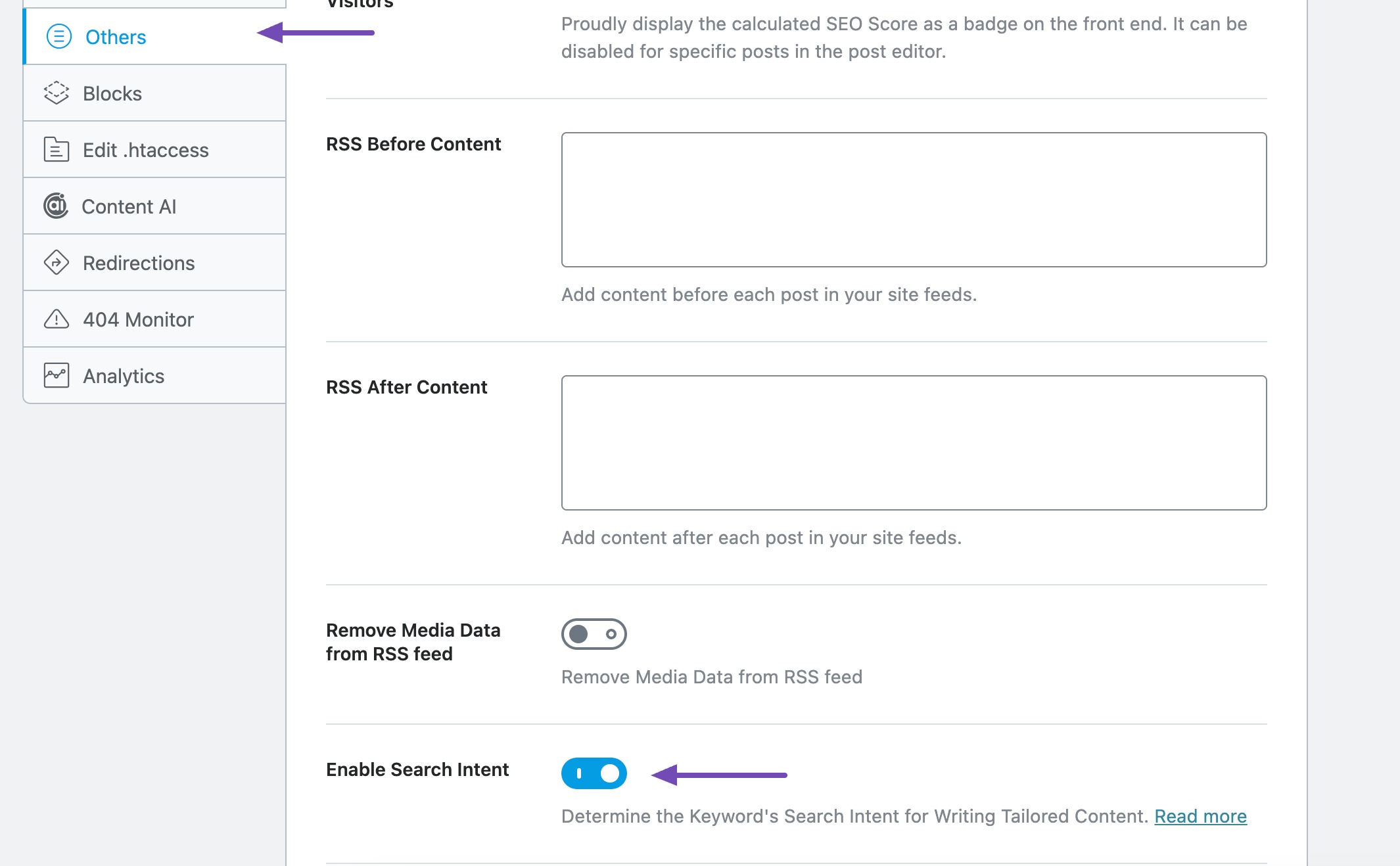
Once enabled, you can check the search intent of your focus keyword from the post or page editor. Open the editor in WordPress and navigate to the Rank Math meta box.
The Show Intent label beside your primary keyword instantly displays its intent, helping you optimize effectively. Simply drag another keyword to the first position to check its intent.
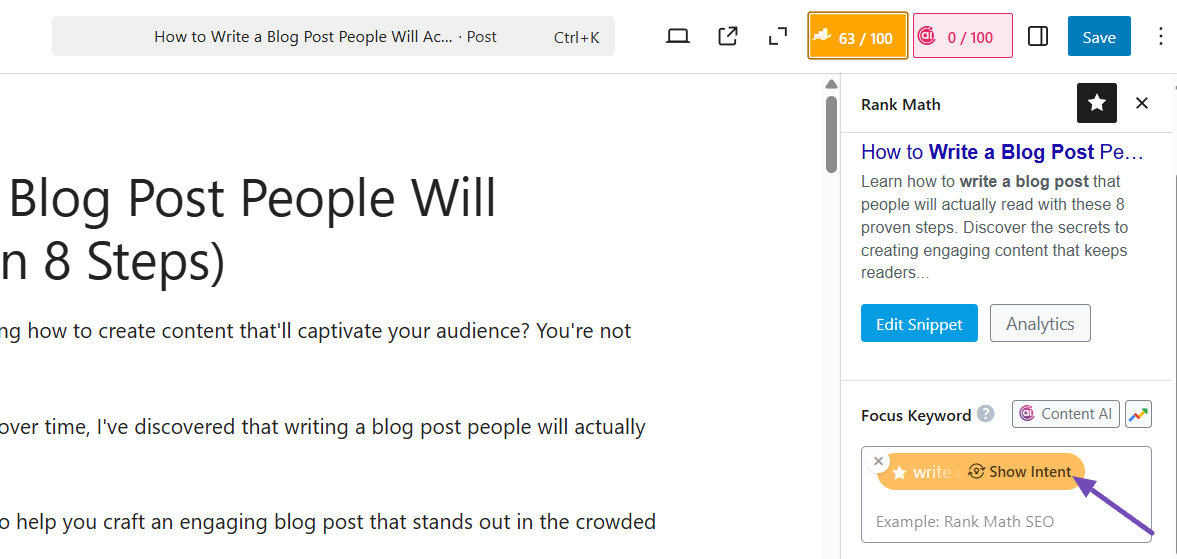
Rank Math will analyze and display the detected search intent next to the keyword field, helping you quickly determine whether your content aligns with what users are looking for.
Once identified, the search intent is stored in your site’s database, so you don’t need to check it every time. You can hover over the icon anytime to view the intent again.
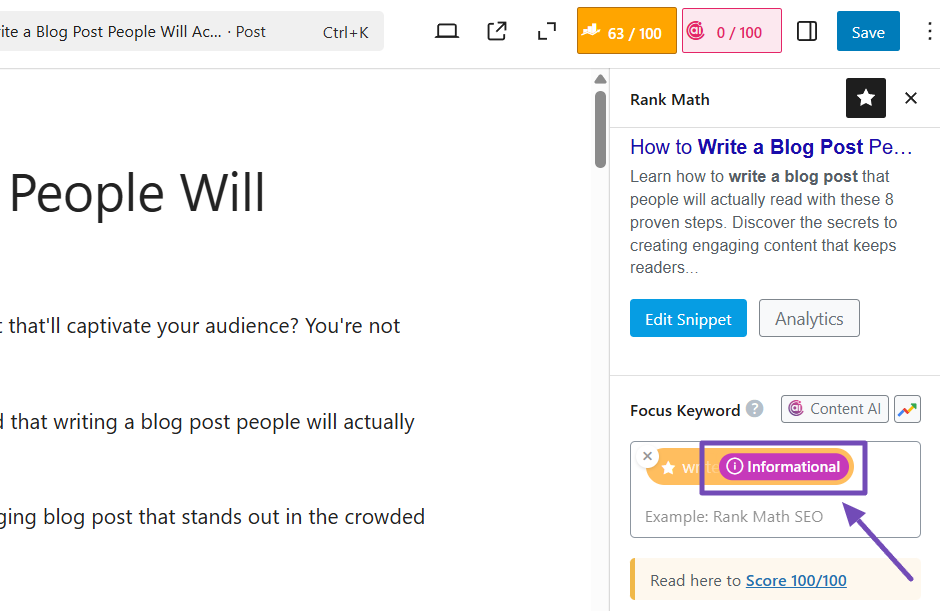
4 How to Optimize Content for Search Intent
Once you understand the search intent behind a keyword, the next step is to create or adjust your content to match what the audience expects.
When your content type, structure, and tone fit the intent perfectly, it not only satisfies readers but also helps you rank higher.
4.1 Match Content Type, Format & Angle (the ‘Three Cs’)
Before writing, take a close look at what kind of content Google already shows for your keyword. Think about three main factors: content type, format, and angle.
Content Type
What kind of page does your audience want? It can be a blog post, product page, video, or landing page.
For instance: if you search buy iPhone 17, you’ll see eCommerce pages, which means you should create a product page. But if you search how to use Rank Math, you’ll find guides and tutorials, so a blog post or video fits better.
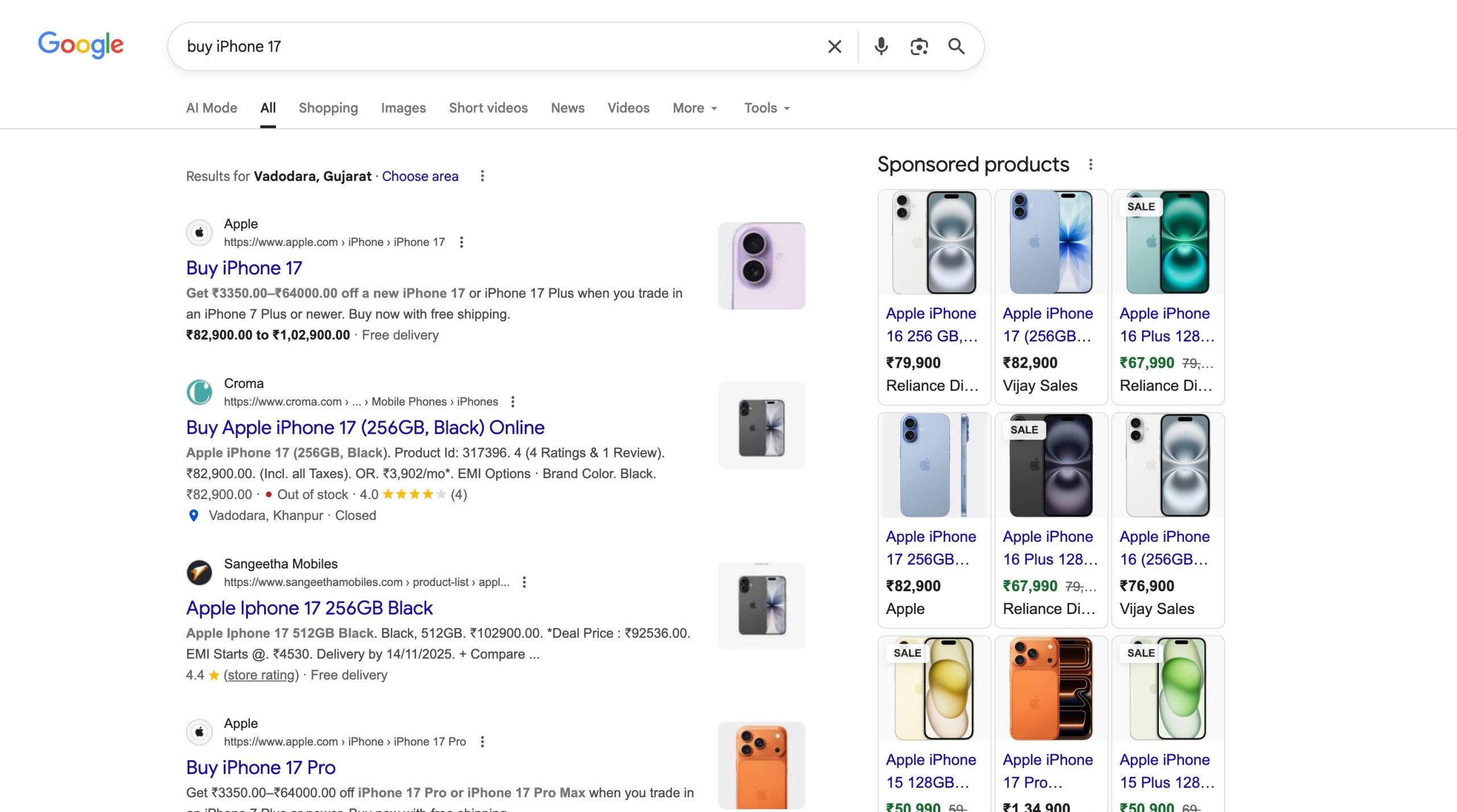
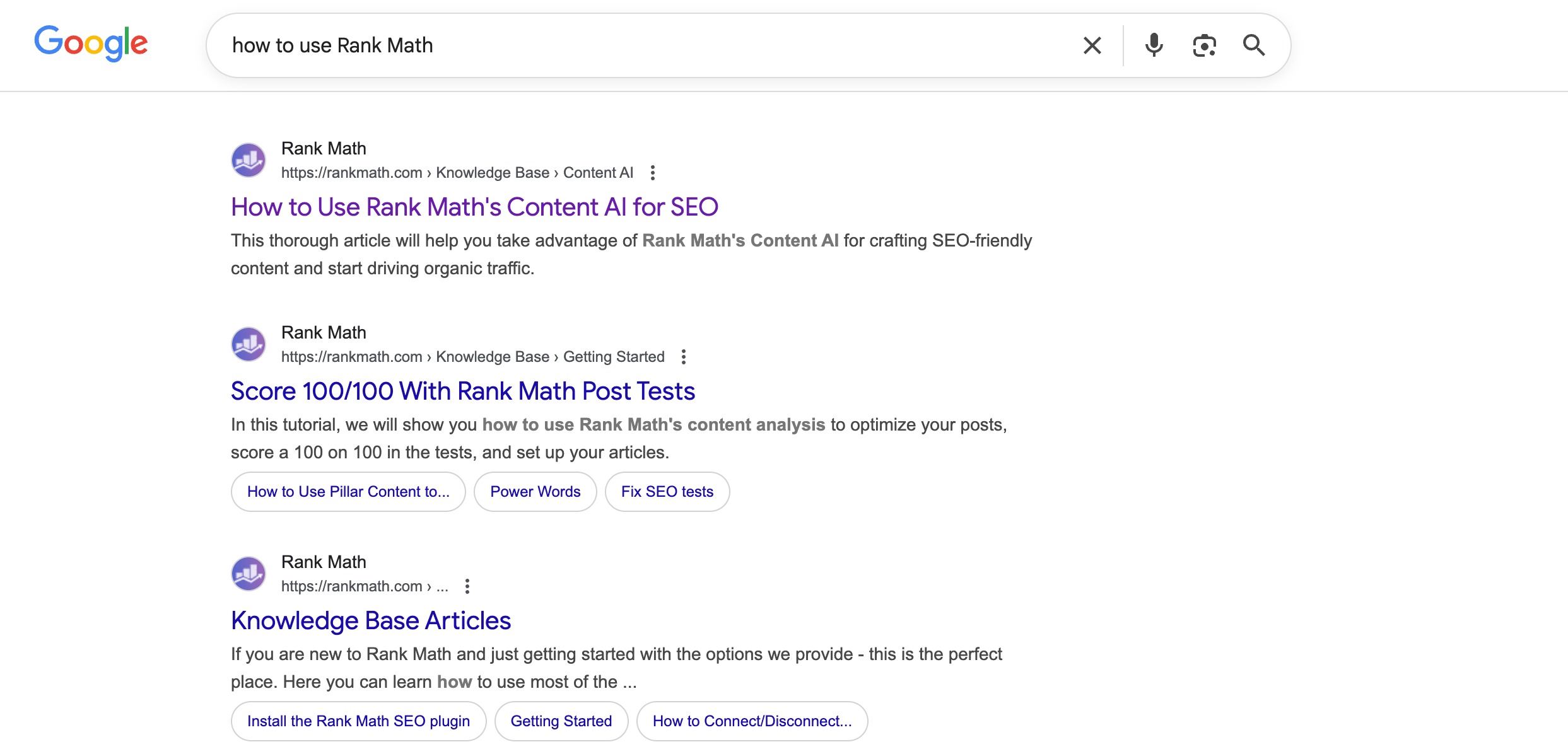
Content Format
How do users want the information presented? The format can be a listicle, how-to tutorial, comparison, or review.
- Example: best SEO tools → listicle
- How to install Rank Math → step-by-step guide
- Rank Math vs Yoast → comparison
Content Angle
What unique focus or detail are searchers expecting? This can be something like for beginners, updated for 2025, or step-by-step.
For instance, best laptops 2025 for students tells your users what they want: the latest and student-focused recommendations.
4.2 Cover What Searchers Expect
To meet intent fully, your content should cover all the key points users care about.
Start by analyzing the top-ranking pages for your keyword. Look for patterns, what topics or subtopics do they include? If several pages mention certain features, comparisons, or FAQs, your content should too.
You can do a quick content gap analysis by listing what your competitors cover that you don’t.
For example, if your keyword is email marketing, and People also ask shows How does email marketing work? Or what are the best email marketing tools? Add those sections to your post.
When your content answers these questions, users stay longer, and Google takes that as a positive signal.
4.3 Structure for Usability & Engagement
Even if your content matches the intent, it won’t perform well if it’s hard to read. You need to make it easy to scan and understand.
- Use clear headings and subheadings to organize information.
- Add bullet points, short paragraphs, and visuals (like images, charts, or videos) to keep readers engaged.
- For informational intent, give the main answer quickly near the top, then explain in detail later.
4.4 Optimize Title & Meta Description for Intent
Your title and meta description are what users see first on Google, so they must clearly reflect the intent. When users see that your title and description match what they want, they’re more likely to click, improving your CTR and rankings.
You can use our SEO Meta AI tool to quickly generate titles and descriptions for your content. Ensure that you’ve enabled the Content AI module from your WordPress dashboard, as shown below.
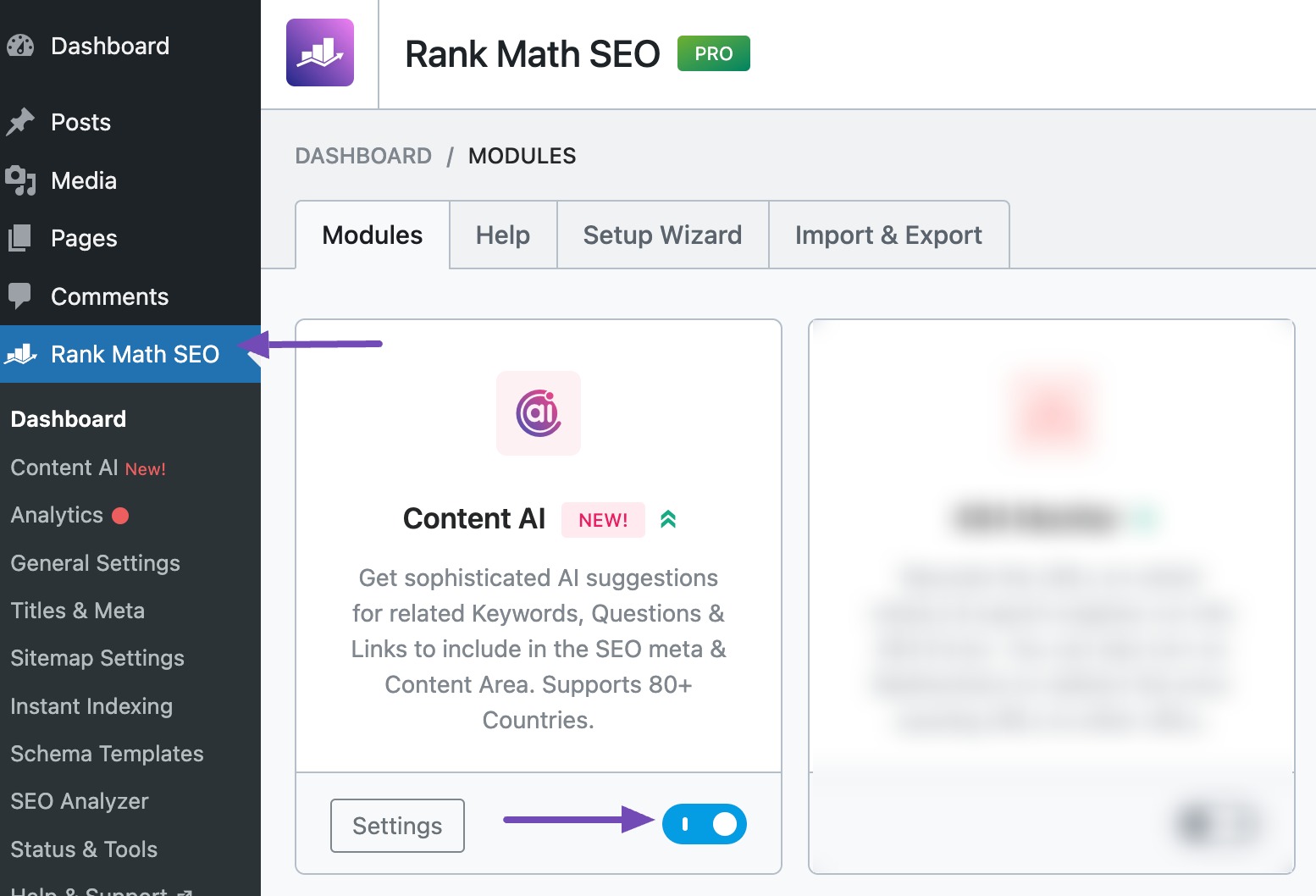
Next, navigate to Rank Math SEO → AI Tools → SEO Meta, as shown below.
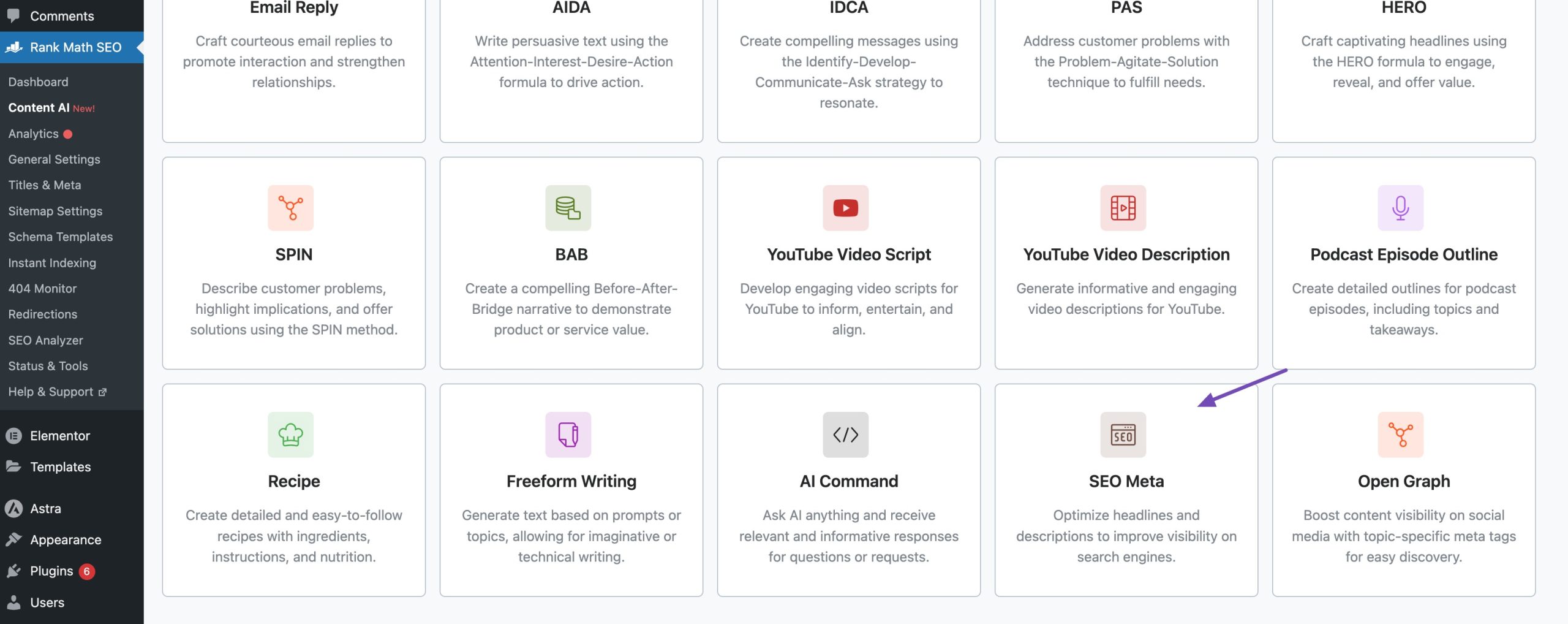
In 200 characters or less, enter the title/headline of your content in the Topic field. You can also fill in the other details. Once done, click Generate, and our AI tool will generate optimized titles and descriptions.

4.5 Update Existing Content
If you have pages that aren’t ranking or performing well, they might not match the current search intent anymore.
- Revisit those pages and check what’s ranking for the target keyword now.
- If top results are tutorials and yours is a short product page, turn it into a guide or blog post.
- Update old posts with fresh examples, current data, or a new format that better aligns with user intent.
5 Conclusion
Search intent plays a key role in creating content that truly meets what your audiences are looking for. When you align your pages with the purpose behind a search, whether it’s to learn, explore, or make a purchase, you build trust, improve engagement, and boost your SEO performance.
It’s not a one-time task; intent changes as user behaviour and search algorithms change.
Keep checking search results and updating your content regularly. By matching your content to user intent, you’ll not only satisfy readers but also send strong positive signals to search engines.
If you like this post, let us know by tweeting @rankmathseo.
